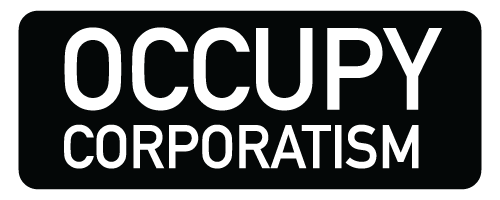Outdoor behavioral healthcare, also known as wilderness therapy, has become an increasingly popular option for parents looking to help troubled teens. Programs like Bluefire Wilderness Therapy promise to take struggling adolescents out of their regular environments and into nature, where they’ll learn important life skills and coping mechanisms.
However, bluefire wilderness complaints reveal a concerning dark side to this rapidly growing industry. Former clients and staff allege rampant abuse and negligence at Bluefire that ultimately put teens in danger, rather than helping them.
In this post, we’ll take an in-depth look at the serious bluefire wilderness complaints and examine whether parents can really trust companies like Bluefire with their child’s health and safety.
An Overview of Wilderness Therapy

Wilderness therapy involves taking adolescents struggling with issues like addiction, depression, or behavioral problems out of their everyday environments. The teens are then placed in nature-based camps or outdoor programs, usually for 6-10 weeks.
The key goals of wilderness therapy include:
- Teaching coping skills and self-regulation
- Building confidence
- Instilling responsibility and independence
- Improving family relationships
- Addressing mental health issues and behavioral problems
Programs provide therapy and group counseling. However, the main “treatment” is considered the wilderness itself. Being disconnected from technology and routine is said to allow teens to reflect on their actions and grow emotionally.
Most wilderness therapy takes place in the western United States, with Utah containing over half of all programs. The industry has grown rapidly since its inception in the 1950s, with revenue topping $400 million annually.
With increasing demand, many new wilderness therapy companies have launched. But lax regulations mean quality can vary drastically.
Introducing Bluefire Wilderness Therapy
Bluefire Wilderness Therapy opened in 2008 in Enterprise, Utah. It promises professional treatment tailored specifically to each client’s unique issues.
The Bluefire website states its wilderness therapy facilitates:
- “Profound change”
- “Lasting healing”
- “Restoration of the family”
This lofty messaging appeals to desperate parents. But can Bluefire actually deliver?
The company claims to be licensed through the state of Utah. However, no government body licenses or monitors wilderness therapy. The industry largely governs itself.
Bluefire costs around $500 per day, adding up to $15,000-30,000 for a full 6-12 week stay. While expensive, many parents view it as a last hope for their troubled child.
But behind the polished website and emotional testimonials lies something much darker.
Disturbing Allegations Against Bluefire
Parents place immense trust in Bluefire Wilderness Therapy to care for and heal their children. However, former clients and staff reveal neglect and abuse seems to run rampant throughout the organization.
Troubling complaints against Bluefire include:
Inadequate Staff and Dangerous Conditions
- Staff lack proper training and qualifications, with high turnover rates
- Many group leaders are under 25 with no credentials
- Untrained staff unable to safely manage mental health crises
- Negligent lack of medical personnel and procedures
- No measures in place to verify medications or diagnoses
- Failure to inform parents of injuries and incidents
- Kids dangerously overworked with insufficient food, water, and rest
Abusive and Coercive Techniques
- Humiliating and demeaning punishment of teens
- Physical abuse like dragging kids along ground
- Emotional abuse through isolation and brainwashing
- Misleading marketing to desparate parents
- Coercive enrollment process with no real therapy
- Forceful restraints used improperly
Pattern of Complaints and Lawsuits
- Over a dozen serious lawsuits and state violations
- Former students recount trauma and nightmares
- Employees confirm rampant problems internally
- State tries to shut down Bluefire over infractions
- Series of public scandals covered in media
These alarming complaints suggest deep dysfunction and exploitative practices at Bluefire. But with so many reports, how has the organization stayed open?
How Does Bluefire Stay in Business?
Despite the blizzard of bluefire wilderness complaints, the company has managed to remain operating for over a decade.
This raises an obvious question – how?
A few key factors allow them to continue business as usual:
Manipulative Messaging
- Website shows pristine nature scenes, not the real conditions
- Emotional testimonials play on parents’ desperation
- Vague claims of “treatment” and “healing”
- No mention of risks or legal issues
Intimidation of Critics
- Threats of lawsuits silence former clients
- Non-disclosure agreements (NDA) prevent speaking out
- Fear of retaliation stops employees reporting
Toothless Industry Oversight
- No required licenses or government monitoring
- Lax regulations let unqualified staff “treat” teens
- Industry associations are superficial marketing tools
Profitable Business Model
- Desperate parents will pay almost any price
- Highly lucrative with overhead costs low
- Short 6 week stays mean fast customer turnover
- Can coerce Medicaid and insurance to pay
Through shrewd tactics, Bluefire sustains its profitable business despite the obvious ethical issues. But with growing public awareness, change may come soon.
Signs Point to a Reckoning for Bluefire
Though Bluefire has so far weathered the storm of complaints, recent events suggest the company may face real consequences soon.
Here are some promising signs that point to a reckoning:
- Lawsuits from former clients continue mounting
- Local media investigations bringing attention
- Employees break NDAs to speak out
- Listed as one of Utah’s “troubled teen” programs
- State forces closure of Bluefire’s sister program Redcliff Ascent over infractions
- Parent advocacy groups lobbying for stricter oversight
- Federal and state proposals introduced to regulate industry
- Major insurance providers dropping wilderness therapy coverage
- Decreased enrollment numbers as scandals spread
While Bluefire has managed to stay open, the ground beneath them appears increasingly shaky. The right combination of public outrage, media spotlight, and political will may soon force real changes.
What Should Parents Do?
If you’re a parent considering wilderness therapy, bluefire wilderness complaints should give you pause about exposing your child to potential harm.
Here are some tips going forward:
- Thoroughly research any program’s track record
- Speak directly to former clients if possible
- Make sure qualified medical staff are consistently on site
- Ask about policies on restraints and discipline
- Have your own doctor verify any medications and diagnoses
- Maintain frequent contact and visibly monitor your child’s care
- Avoid programs with excessive non-disclosure agreements
- Consider community-based treatment programs closer to home
- Get informed on lobbying efforts for wilderness therapy reform
For parents in crisis, decisions are difficult and often happen quickly. But take your time and remember – you know your child best. Don’t feel pressured into an option you’re not comfortable with.
Final Thoughts
The numerous bluefire wilderness complaints paint a tragic picture of exploitation and harm. While providers like Bluefire market themselves as caring and regenerative, the reality can be shockingly different.
However, increased public scrutiny and pressure gives hope that change lies ahead. With sustained effort from journalists, activists, policymakers and parents, the wilderness therapy industry can perhaps be reformed into something that truly nourishes growth for troubled teens.











